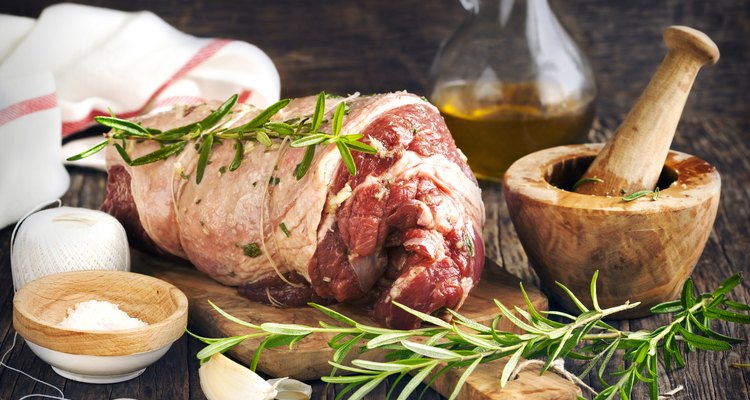
AnjelaGr/iStock/GettyImages
A whole roasted leg of lamb makes an extravagant centerpiece for lavish meals, but it can be a finicky thing to prepare properly. The problem is its tapered shape, which means one end inevitably cooks more quickly than the other. If that same leg is butterflied, it becomes a much simpler proposition. It forms a large and relatively flat piece of meat that can be slow-roasted for even cooking, or roasted quickly at high heat for a well-browned exterior and pink interior, like a giant lamb chop.
Slow-Roasting
Lay the butterflied leg on a clean cutting board, with its split side facing up. With a sharp knife, remove any large seams of fat and visible connective tissue. Some of the muscles are noticeably thicker than the remaining portion of the leg. There are corresponding thin areas next to most of them. For even cooking, "butterfly" these thick muscles by slicing horizontally into them, leaving part of the muscle attached, then flip the rounded portion on its back into a nearby thin spot.
Pin the newly-sliced muscles into place with bamboo skewers, then sprinkle the lamb on both sides with coarse salt. Let it rest in your refrigerator for an hour, so the salt can penetrate.
Place the lamb on a foil-lined baking sheet, and preheat your oven to 275 degrees Fahrenheit. Season the lamb with any additional spices or herbs, as desired. Slide the sheet pan into your oven, on a middle rack.
Slow-roast the lamb until its internal temperature reaches 120 F when tested with an instant-read thermometer, approximately 30 to 40 minutes depending on its size and your individual oven. Remove the sheet from the oven, and position one of the racks near the top. Preheat the broiler.
Broil the lamb for four to six minutes, until the top is well-browned and the lamb's internal temperature reaches 125 F. Let the leg rest for at least 15 minutes, then remove the skewers before carving it. It will continue to cook during that time, finishing at medium-rare.
Quick-Roasting
Place the butterflied leg on your cutting board, and trim away any connective tissue or large seams of fat with the tip of a sharp knife. Even out the thick and thin sections of the leg by horizontally halving the thickest spots, and flipping the sliced muscle into a thin spot. Hold these pieces in place with bamboo skewers.
Sprinkle the lamb with coarse salt or immerse it in a seasoned marinade, and refrigerate it for an hour. If you've opted for a marinade, dry the leg of lamb when you take it out of the refrigerator.
Preheat the oven to a temperature of 425 degrees Fahrenheit. Rub or sprinkle the lamb with any additional seasonings to taste, and place it on a parchment-lined baking sheet with the cut side facing up.
Roast the lamb for 15 to 20 minutes, then slide the sheet from your oven and turn the leg so the smoother outside is facing up. Return it to the oven and roast it for another 15 to 20 minutes, until its internal temperature reaches 125 F. Remove the leg to a serving platter and let it rest under a loose covering of foil for at least 15 minutes.
Remove the skewers, then carve and serve the roast.
Related Articles
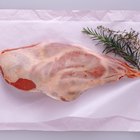
Slow Roasting a Leg of Lamb Until It Is ...
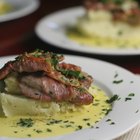
How to Cook Veal Leg Scallopini
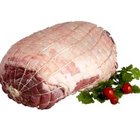
How to Rotisserie Cook a Boneless Leg ...

What Are Pork Cutlets?

How to Cook a Small Lamb Shoulder
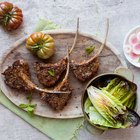
How to Grill Rack of Lamb
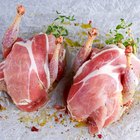
How to Cook Squab
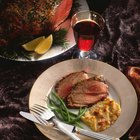
How to Grill a Boneless Leg of Lamb ...

How to Cook Buffalo Fillet
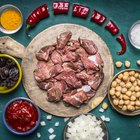
How to Cook Top Round Lamb
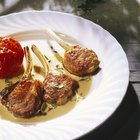
How to Make Perfect Lollipop Lamb Chops
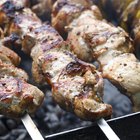
How to Cook a Tender Lamb Breast
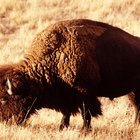
The Best Way to Prepare Bison Sirloin
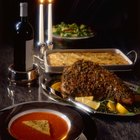
How to Smoke a Leg of Lamb Using an ...
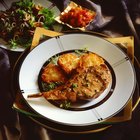
How to Cook a Butterflied Pork Chop in ...

How to Cook Venison Inside Loin
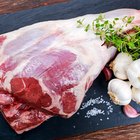
How to Cook a Lamb Square Cut Shoulder
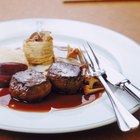
Can You Slow Cook Petite Beef ...
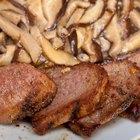
How to Cut Up Your Deer Tenderloins
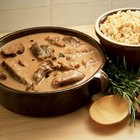
How to Cook a Deer Neck Roast in a Slow ...
References
- On Cooking: A Textbook of Culinary Fundamentals; Sarah Labensky, et al.
- Serious Eats: Butterflied Leg of Lamb Recipe
Resources
Tips
- Butterflied roasts can be stuffed, rolled and tied as well for an impressive presentation. Your butcher can also provide a deboned lamb shoulder or breast for stuffing, though these might require ordering in advance.
- These instructions assume you wish to roast your lamb to medium-rare. If you prefer a higher degree of doneness, add 5 to 10 degrees Fahrenheit for each additional level beyond medium-rare.
- If you'll be serving diners who like varying degrees of doneness, skip the step of evening out the leg's thickness. That way, the thick parts can remain rare or medium-rare, while the thin parts cook to medium or well-done for the other diners.
- Warming the lamb to room temperature before roasting is perfectly food safe, as long as the warming time and the earlier preparation time don't add up to two hours or more.
- If you have a convection oven, reduce the roasting temperature by 25 degrees, but follow the same cooking times.
Writer Bio
Fred Decker is a trained chef and prolific freelance writer. In previous careers, he sold insurance and mutual funds, and was a longtime retailer. He was educated at Memorial University of Newfoundland and the Northern Alberta Institute of Technology. His articles have appeared on numerous home and garden sites including GoneOutdoors, TheNest and eHow.